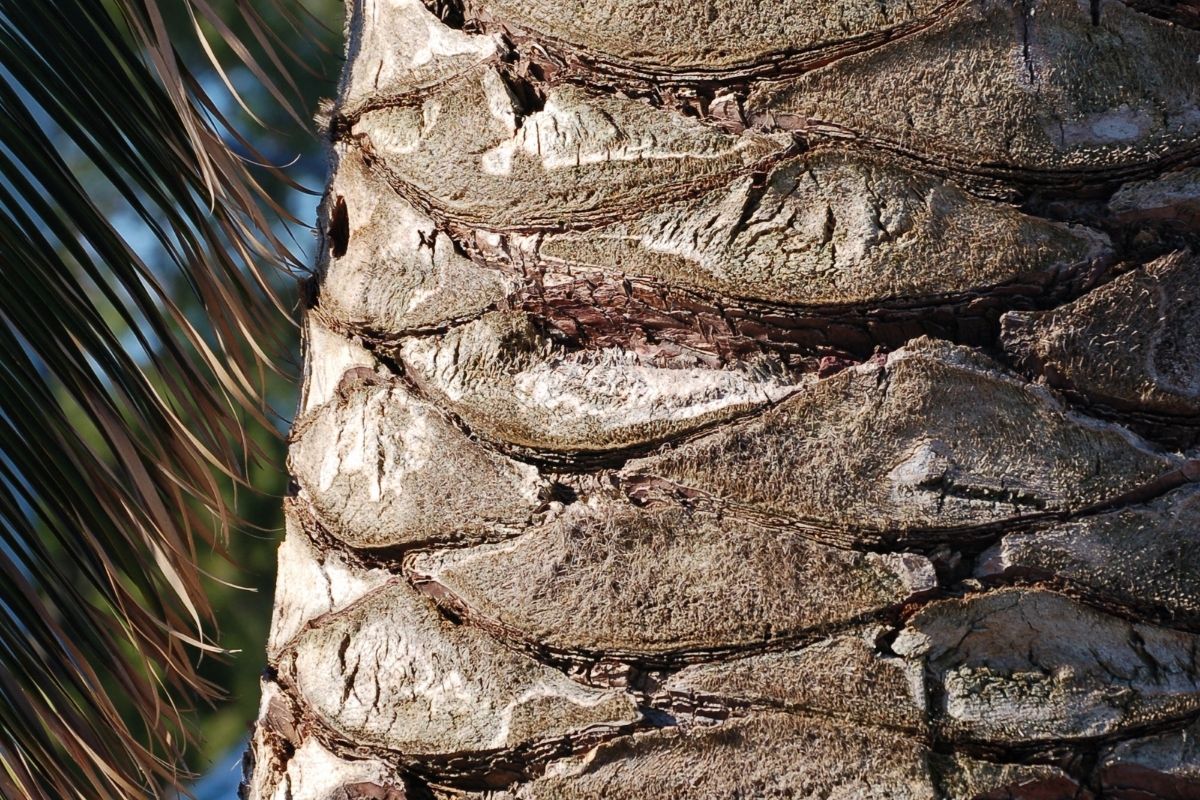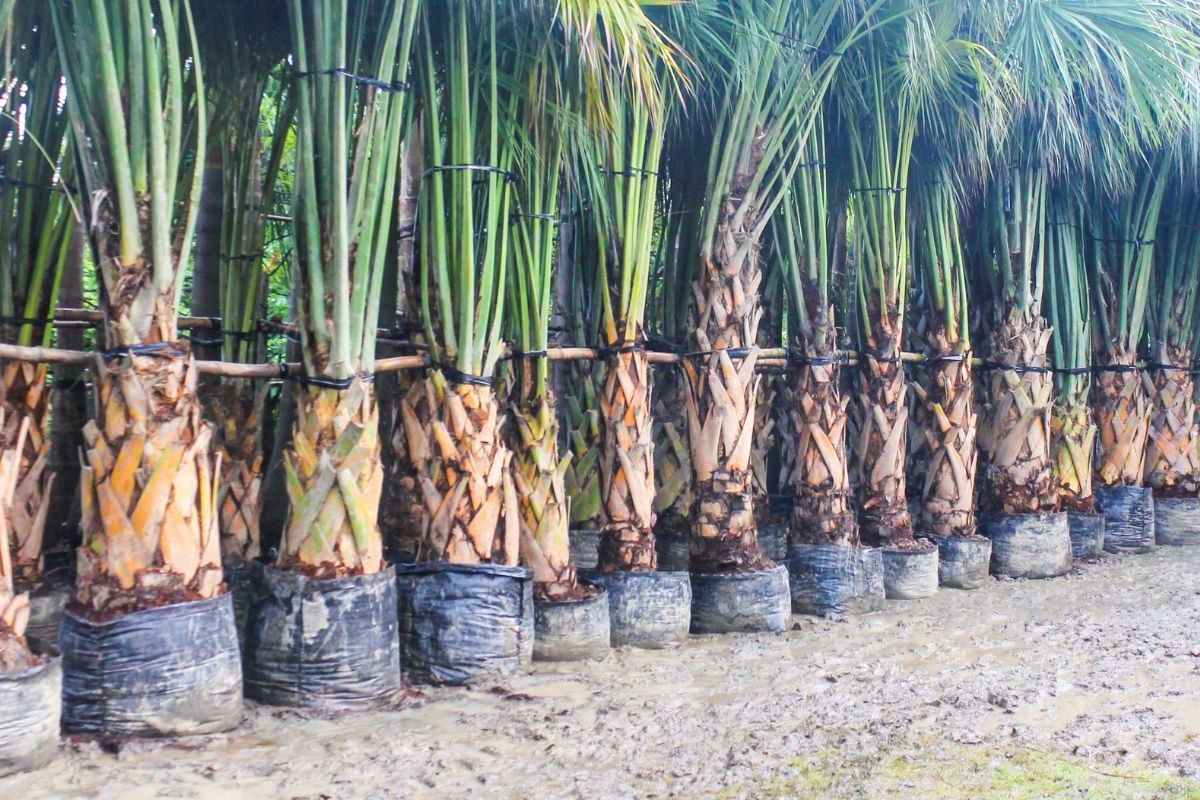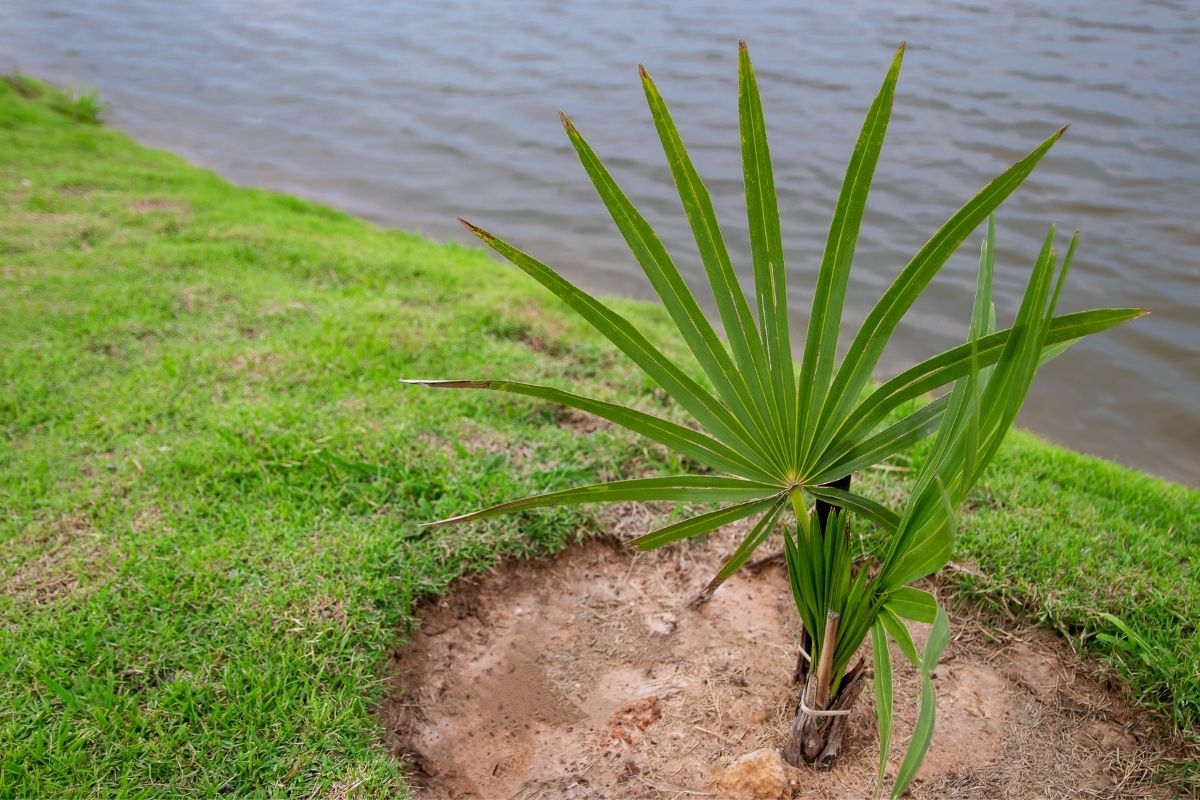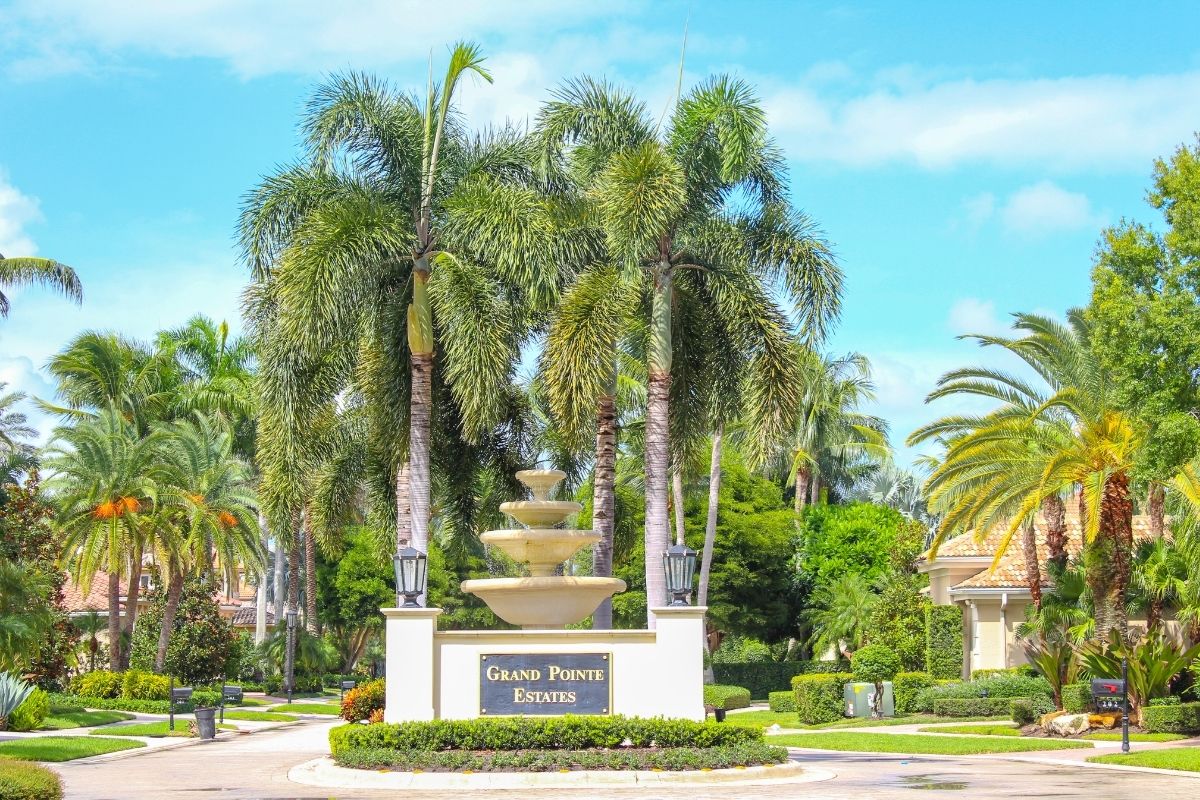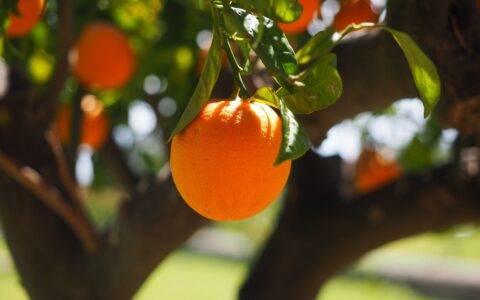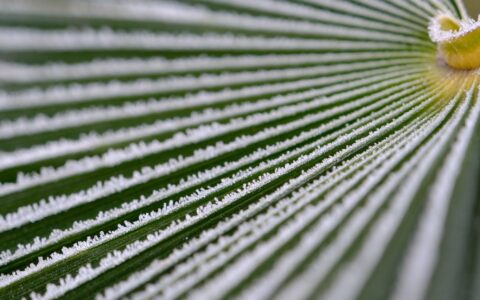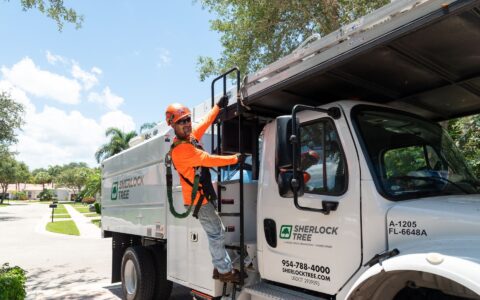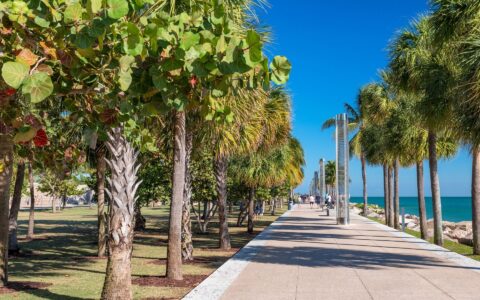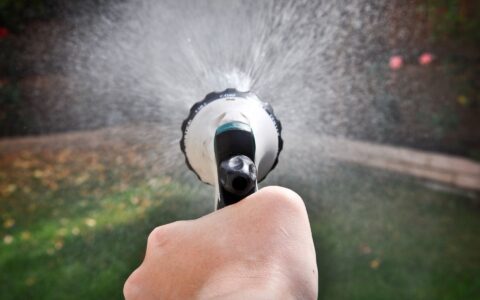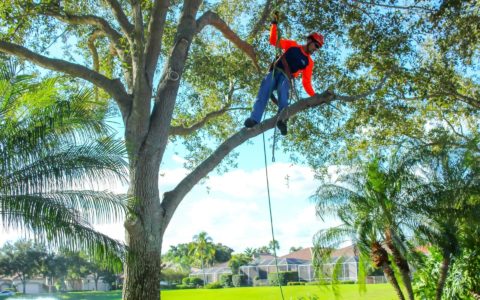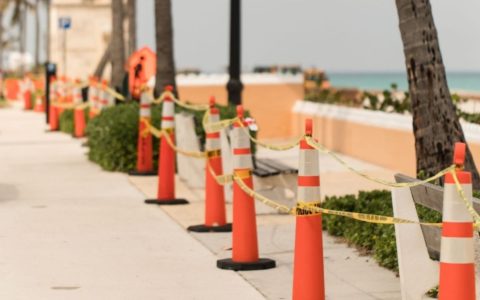Though we often lump palm trees and trees into the same category, palms have different needs and planting requirements than other types of trees. In fact, palm trees are not technically “trees” at all, but rather a type of large, woody grass-like plant. In this article, we’ll go over how to properly select, site, transport, and plant a palm and how that process may differ from planting a deciduous or coniferous tree.
Before Planting a Palm Tree…
In South Florida, palms of all types are everywhere. You’ll see everything from tall, single stem palms rising skyward to short, multi-stem palms in front yards. In fact, there are more than two dozen types of palms that grow in South Florida, with a range of growing requirements.
So, before you plant a new palm tree, make sure you choose a palm that will work well in your garden.
Here are the most important things to consider when choosing a palm tree:
- Mature palm height and spread
- Fruiting type or non-fruiting
- Self-cleaning (dropping fronds) or not
- Hours of sunlight and shade needed
- Wind intensity in your garden
- Whether or not salt spray reaches your property
- Soil type, drainage, and fertility
- Nearby surroundings
Matching your plants’ requirements to your garden conditions is key to a healthy landscape. Choosing a native tree species is always a good idea, as native plants and trees have evolved over time to thrive in their surroundings.
Not sure what plants are native to south Florida? Check your closest Florida native plant society chapter.
If you’re thinking of planting a palm, don’t forget that some common south Florida palms are susceptible to Lethal Bronzing Disease (LBD), which has no cure. Before you choose a palm, check the list of species that are known hosts of LBD.
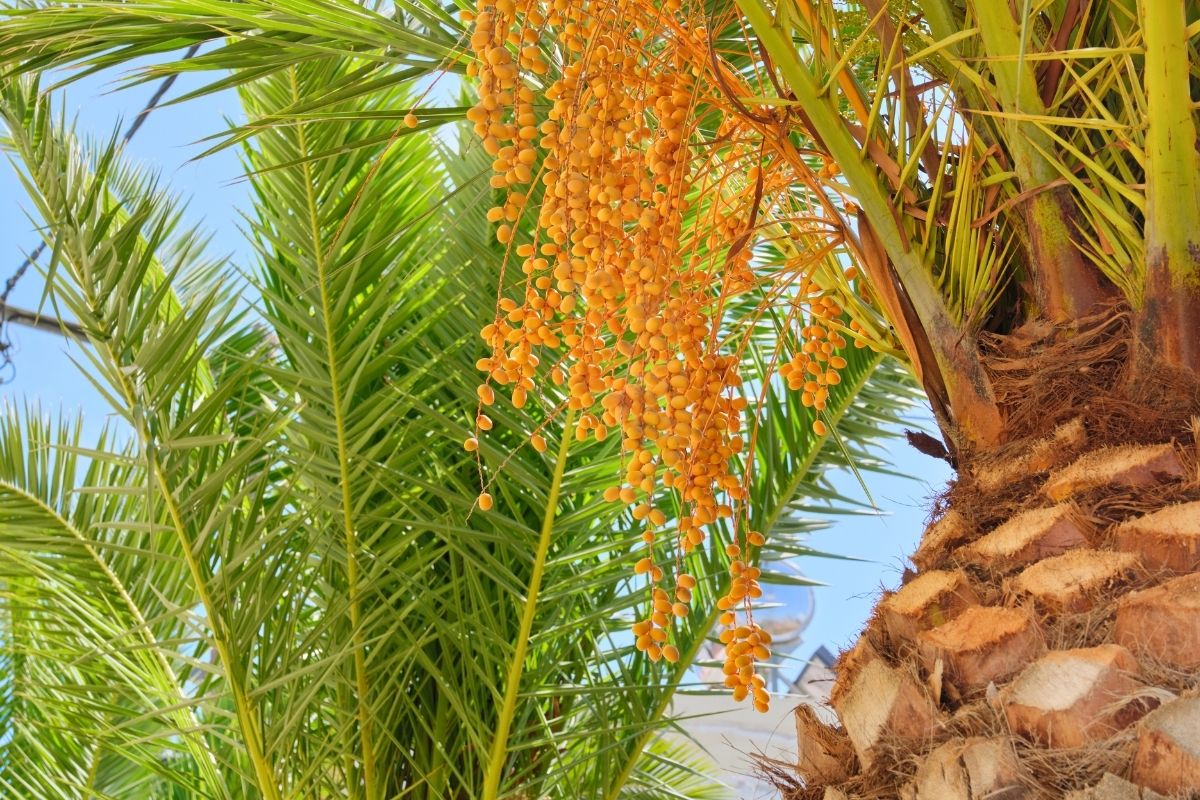
Some palms have fruit, which can be messy when it falls.
How Palms Differ from Other Trees
Palms Aren’t Trees
Palms are called trees, but they’re not trees in the scientific sense.
Plant scientists sort plants according to their internal structure and how they develop. True trees are classified as dicots (their seeds make two leaves) while palms are classified as monocots (their seed makes one leaf).
Monocots make one of the largest groups of plant types in the world. Roughly described, monocots are grass-like plants (because of their leaf type) that include:
- Rice
- Wheat
- Corn
- Sugar cane
- Bamboo
- And many others, including bananas and pineapples!
Palm Trunks Aren’t “Wood”
While a tall, single stem palm trunk may look like a tree, its trunk structure is different. Unlike a true tree, a palm trunk:
- does not form annual growth rings like true trees,
- grows upward but doesn’t expand in diameter as the palm matures, and
- has no heartwood or sapwood that can be used in construction.
Palm Leaves Only Grow from a Single Point
If you cut off the top of your palm, it will die. Palms grow their leaves (fronds) from a single point at the top of their trunk. When that’s gone, they cannot grow any more leaves.
True trees will make new leaves and branches around a cut-off trunk, but a palm will not.
How to Properly Plant a Palm Tree
Before you dig a hole and plant a palm, learn a little about your palm’s needs. Understand what planting conditions it needs, where to site it, and how best to handle it (to prevent damage to it and to you). Then move on to when and how to plant it. If you treat your new palm well from the very beginning, it will reward you with years of healthy, trouble-free growth.
How much sunlight should a new palm tree get?
Many palms need full sun to grow. But a new palm may need some shade before it’s planted or may need to be positioned with one side facing away from the sun.
If your palm has been grown in a protected greenhouse or under shade cloth, it’ll need to be gradually introduced to full, natural sunlight. Filtered light is much gentler than full sun, so avoid sunburned fronds on your new palm by gradually moving it from shade into a sunny location over the course of a week or two before you plant it.
If your palm was grown outdoors with one side facing the sun, be sure to transplant your palm with that same side toward the sun. This is because the section of palm trunk that has already been growing in full sun has adjusted to sun exposure and won’t sunburn when it’s transplanted.
This is true for many tree species that have naturally thin bark or whose bark thickens only with age. You’ve probably seen trees with their trunks painted white (you’ll often see this in orchards or along streets and beaches). The white paint protects the bark surface from sunburn and reflects sunlight to keep the trunk from absorbing too much heat.
If you’re not sure about what part shade or part sun means, check this article from the University of Florida.
What kind of soil and drainage does a palm need?
Before planting a palm, check your soil and the slope where you want to put a palm.
Palms like sandy soil with good drainage (think of how palms grow on sand beaches) and don’t want their roots sitting in water.
If your garden is on a slope, don’t plant your palm at the base where water will drain and collect. Choose a spot where your palm will receive water from rain and irrigation, but where excess or standing water will flow away.
You want to find the right balance of irrigation for your palm. Plant it where its roots get plenty of water to grow but irrigation water doesn’t drain away so fast that those roots don’t have time to take it up.
If you have clay soil, you might not want to plant a palm in it. Clay soils are known for holding onto water and draining slowly, which will rot the base of your palm. In this situation, you might want to have your garden evaluated by a professional to determine the best spot for good drainage.
If you don’t know your soil type, don’t worry. The University of Florida’s agriculture extension program will test your soil. You’ll get a report telling you what it’s made of and if you need to improve it.
How much space do you need to plant a palm tree?
As with all trees, where you plant your palm is critical to its long-term health. And one of the most important keys to the longevity of your newly planted palm is space.
While a young palm tree is going to be small when you plant it, its goal is to grow to its full, mature size. People are often surprised by how quickly their newly planted palm tree grows and how big it gets!
You’ll save money and time by giving your palm the space it needs to reach its full size without excessive pruning. Plus, you won’t have to remove it if it gets too crowded. This applies to its height as well as its spread, so check that the palm you choose won’t grow into overhead utility lines or block views.
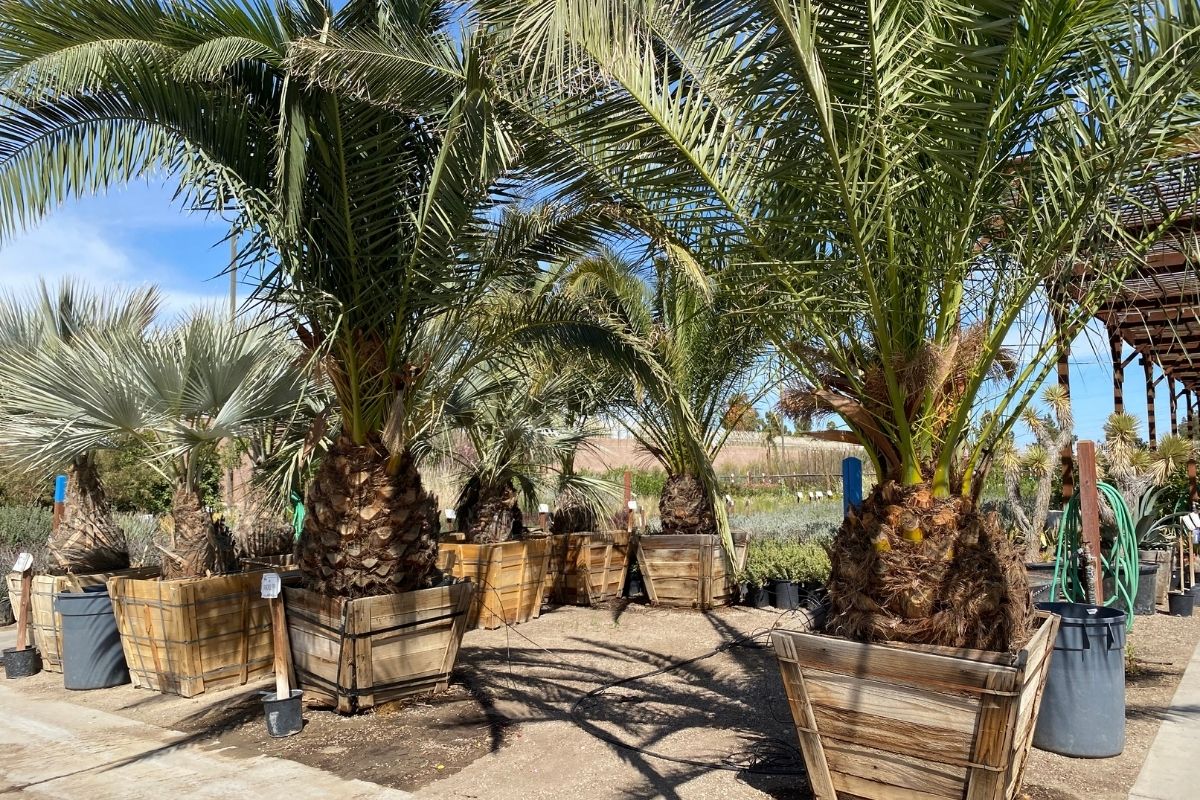
Some palms are too large to move and a professional will have to move (and possibly plant) the palms for you.
Does a palm need special care during transportation or handling?
Palms don’t make bark and their trunk surface is delicate. While true trees respond to bark wounds by sealing off the damaged area, a palm doesn’t. Any damage during transportation or from rough handling likely won’t completely heal.
Transporting a palm is heavy work and handling a palm that has sharp fronds, multiple trunks, or a single, tall trunk can be difficult. When you’re moving a palm, avoid scratching or cutting its trunk.
Wrap a palm’s trunk to prevent damage during transportation and transplanting. Wrapping or tying up its fronds will protect them from damage and, if you are planting a palm with sharp, pointed fronds, wrapping them will protect you, too.
How deep should you plant a palm tree?
When you’re ready to plant your palm, give it a good start by installing it right.
As with all trees, planting too deep causes problems for the roots and is one of the most common reasons that trees die young. The sad part is that this early death is easy to avoid – just plant at the right depth!
On the other hand, planting a palm too shallow will make it unstable and increase the chances that it will fall over in windy conditions.
Here’s a general rule of thumb for the size and depth of your palm’s planting hole –
- Twice the diameter of the palm’s rootball or the container size
- The same depth as the rootball
How do you measure the proper planting depth?
The depth you measure is key when planting a palm.
Similar to true trees that have a trunk flare (where bark changes to roots), palms have a place where the shoot (or trunk) meets the roots. But unlike true trees that make woody, anchoring roots, palms have only a fibrous root system.
Instead of branching off from other roots underground, palms make new roots around their base. These are called adventitious roots because they grow directly from the palm’s trunk or stem. (Think of the base of corn stalks or how strawberry plants make roots where their stems touch down on the soil).
When you’re planting your palm, look for where its roots start. Then use these planting depth guidelines:
- If your palm tree was field-grown, plant it so that its root area is level with the surface of the surrounding soil.
- If you’re transplanting a palm that has been grown in a container, you’ll want to plant it so that the top inch or so of its roots are below the soil level.
In a container, the planting soil may have settled or already decomposed, exposing existing roots and stimulating roots to grow above the container soil level. Planting a container-grown palm a little deep ensures that it will anchor itself and grow new, stabilizing roots at the right height.
The base of the trunk is split on my new palm tree. Is that bad?
Depending on the size and type of your palm, you may see the base of its trunk split and flare out, with roots expanding beneath. This is normal and not a sign of disease or damage.
Because palms make new roots from their stems and not from existing underground roots, the area of root growth around the trunk base will naturally expand outward and upward. To accommodate the expanding new roots, the trunk’s surface (which isn’t rigid bark) will split when it can’t expand anymore.
Should you fertilize a newly planted palm?
After you plant your palm, you should make sure it’s watered regularly and consistently to help it settle in, especially if the weather is hot. Beyond that, leave it alone.
You may be tempted to fertilize your new palm but it’s better to hold off on fertilizing for a while.
At first, a newly planted palm may not look like it’s growing, but it’s busy making roots and settling in. When the palm is established, it will put out new green spears of leaf growth.
Once you see new growth emerging from the tip of your palm’s trunk, you can fertilize with a palm fertilizer.
What should I fertilize with?
Palm fertilizer is designed to give palms the nutrients they need, so be sure to use a fertilizer specifically made for them. Don’t assume that if your palm is growing in a lawn, fertilizing the lawn will be enough.
Places that get heavy rainfall, like south Florida, often have soils that are nutrient deficient. This is because heavy, regular rainfall and irrigation can wash nutrients through soil faster than trees and plants can use them.
Soil pH can also create nutrient deficiencies. The pH range that supports the greatest plant growth is between 6 and 7. When soil pH is too high (acidic soil) or too low (alkaline soil), soil nutrients become unavailable to plants.
The common nutrient deficiencies in palms include:
- Nitrogen (N)
- Potassium (K)
- Magnesium (Mg)
- Manganese (Mn)
- Iron (Fe)
- Boron (B)
Some soil nutrient deficiencies, such as nitrogen, are easily treated, but always follow directions for fertilizer quantities. Adding too much nitrogen fertilizer, for example, will create new problems, including blocking available potassium.
If you’re unsure whether or not your palm should be fertilized, give us a call. Our experienced Arborists and Tree Health Specialists can determine if your palm is lacking specific nutrients and, if so, how best to bring the palm back to full health.
Need help with your palms?
If you’re not sure what type of palm you should choose, if you want your palm professionally planted, or if an existing palm doesn’t look healthy, give us a call. We’re palm experts and can help you every step of the way. From transplanting to trimming your palms, we’ll help your garden remain healthy and beautiful year-round.
Call Sherlock for quality tree services
Whether you're looking for specific tree care services, such as palm trimming, tree removal, or disease treatments, or would like one of our Arborists to examine your trees to identify any issues and recommend options, we're always here for you! Just give us a call at 954-788-4000 to set up an appointment.
- « Previous
- 1
- 2
- 3
- Next »
SEE MORE ARTICLES
Looking for more?
We've got you covered with a monthly newsletter full of tips, resources, updates, how-to's, and other helpful information about trees and landscapes in South Florida!

